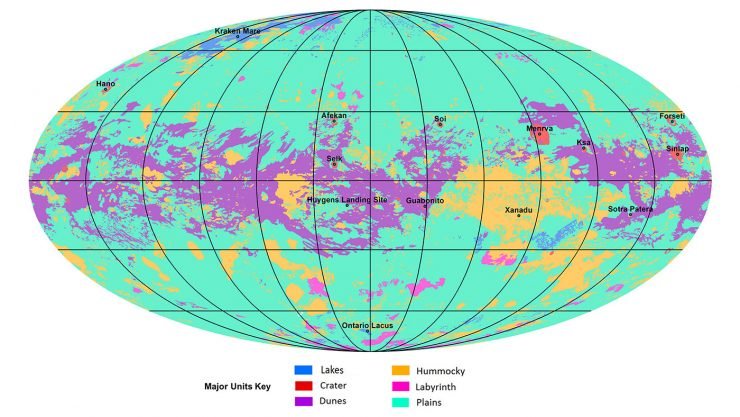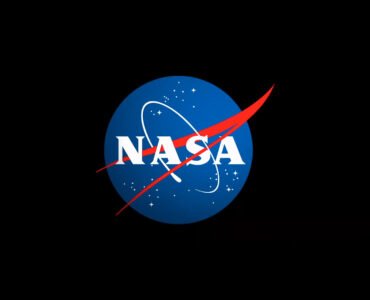NASA has completed the first map of Saturn’s largest moon Titan, revealing a dynamic world of dunes, lakes, plains, craters and other terrains. This the first time a detailed geologic map of a planetary body has been released.
The research conducted at NASA truly reflects the best of human ability and capacity. NASA is not only the best of the United States it represents our best aspirations as human kind.
Titan is the only planetary body in our solar system other than Earth known to have stable liquid on its surface. But instead of water raining down from clouds and filling lakes and seas as on Earth, on Titan what rains down is methane and ethane – hydrocarbons that we think of as gases but that behave as liquids in Titan’s frigid climate.
“Titan has an active methane-based hydrologic cycle that has shaped a complex geologic landscape, making its surface one of most geologically diverse in the solar system,” said Rosaly Lopes, a planetary geologist at NASA’s Jet Propulsion Laboratory in Pasadena, California, and lead author of new research used to develop the map.
“Despite the different materials, temperatures and gravity fields between Earth and Titan, many surface features are similar between the two worlds and can be interpreted as being products of the same geologic processes. The map shows that the different geologic terrains have a clear distribution with latitude, globally, and that some terrains cover far more area than others.”
Lopes and her team, including JPL’s Michael Malaska, worked with fellow planetary geologist David Williams of the School of Earth and Space Exploration at Arizona State University in Tempe. Their findings, which include the relative age of Titan’s geologic terrains, were recently published in the journal Nature Astronomy.
Lopes’ team used data from NASA’s Cassini mission, which operated between 2004 and 2017 and did more than 120 flybys of the Mercury-size moon. Specifically, they used data from Cassini’s radar imager to penetrate Titan’s opaque atmosphere of nitrogen and methane. In addition, the team used data from Cassini’s visible and infrared instruments, which were able to capture some of Titan’s larger geologic features through the methane haze.
“This study is an example of using combined datasets and instruments,” Lopes said. “Although we did not have global coverage with synthetic aperture radar [SAR], we used data from other instruments and other modes from radar to correlate characteristics of the different terrain units so we could infer what the terrains are even in areas where we don’t have SAR coverage.”
Williams worked with the JPL team to identify what geologic units on Titan could be determined using first the radar images and then to extrapolate those units to the non-radar-covered regions. To do so, he built on his experience working with radar images on NASA’s Magellan Venus orbiter and from a previous regional geologic map of Titan that he developed.
“The Cassini mission revealed that Titan is a geologically active world, where hydrocarbons like methane and ethane take the role that water has on Earth,” Williams said. “These hydrocarbons rain…
There is a common misconception that NASA is consuming a huge budget.
NASA’s total budget represents less than half (1/2) percent of the total Government spending budget.
All of these advancements and new technologies that gives us meaning, economic edge, and competitive advantage – all of it comes from this ½ percent investment, and it is this investment that has made United States a leading nation in the field of science.
Imagine for a moment if all the nations of the world competed with each other in space exploration as we compete in military prowess where the humankind would be today.
It is intriguing how study of Titan and planetary sciences are evolving and impacting our lives.
Surprising or not, Titan is the closet thing to our planet Earth, and while we can not inhabit Titan, it is full of mineral riches that we utilize for mass producing our life style. Titan can very easily prove to be a mining planet that we tap in to for hydro carbons if plan to live on an other planet or moon where such resources are not available.
I try to write about articles on my website, one for referencing back when needed and two to share with everyone.
If you like this story you should check out some of the other stories in the science section
To check the original story Click here







